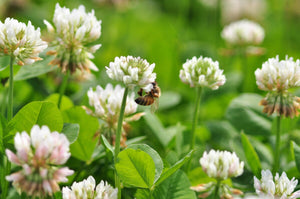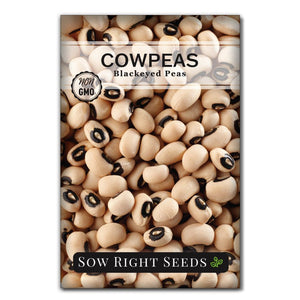From Fuzzy Leaves to Golden Spires: How to Grow Mullein from Seed
Mullein (Verbascum thapsus) is an ancient herbal plant with tall spires of golden blooms that attract bees, butterflies, and other beneficial insects. It is often grown to make mullein tea and other home remedies. Follow these tips for seed germination and preventing it from spreading to grow this useful herb in your home garden.

Table of Contents
How to Grow Mullein from Seed
In its first year, mullein forms a rosette of soft, fuzzy leaves. In its second year, it sends up a dramatic flower stalk that can reach up to seven feet tall. Though often spotted growing wild in poor soil or roadsides, mullein is easy to cultivate in home gardens. Its flowers will attract pollinators, and all parts of the plant can be used for traditional herbal remedies.
Common mullein is a hardy biennial that thrives in full sun and well-drained soil. You can direct sow in spring after the last frost or start indoors 4–6 weeks before transplanting.
Tips for fail-proof mullein seed germination
Mullein seeds will germinate on their own in a natural habitat. The tiny seeds can remain in the soil for years, but they need light to germinate.
Mullein seeds need light to germinate. Press seeds gently into the surface of the soil.
Keep the seeds moist until they germinate in 14 to 20 days.

Growing and Caring for Mullein Plants
Mullein can grow in zones 3-13. Because it’s a biennial, it forms a leafy rosette the first year and requires a cold period (vernalization) to trigger flowering in its second year.
Mullein plants can grow up to 3 feet wide and 7 feet tall. Space plants 12 to 18 inches apart.
Sun
Plant mullein in full sun for the largest leaves and tallest flower spikes. It can tolerate partial shade, but in my garden, I've found that the plants stay smaller and produce fewer blooms. Mullein can be shaded out by other plants.
Soil
Water
Once established, mullein is drought-tolerant and requires very little water. For seed starting, keep the soil moist.
Fertilizing
Mullein generally doesn’t need fertilizer. If you wish, you can use a balanced slow-release fertilizer at planting time, but it will thrive even in lean soil.

Solutions for pests and diseases
Mullein is naturally resilient and rarely affected by pests or disease.
There is one known insect, sometimes called a mullein weevil (Gymnaetron tetron), that lays its eggs in seed capsules. Its larvae eat the seeds, but typically they don't eat more than about 50% of the seeds, and they don't damage the plants.

Harvesting Mullein
You can start harvesting mullein leaves in the first year once they are large enough. Pick the outer leaves first to allow the plant to continue growing.
Flowers are harvested the second year when they are in full bloom. The flowers don’t all open at the same time on the same plant or surrounding plants. I’ve had plants that started blooming in May, while others didn’t flower until much later.
Mullein leaves can be used fresh or dry in teas and other herbal preparations. Flowers are often soaked in olive oil and used for remedies.
Traditional uses of mullein are as an expectorant and for soothing earaches. It is also used for toilet paper and bandages.
Tip: When making mullein tea, use a fine cloth to strain and keep the hairs out.
After flowering, the entire plant dies back, but the sturdy stalks will stay. You can let them stand through the winter and reseed. However, if you want to limit wild reseeding, cut off the flower stalks before they develop seeds.

Mullein FAQs
Is mullein invasive?
Can I save mullein seeds?
Yes! You can collect seeds from the dried flower spikes at the end of the season. However, be cautious. Each mullein plant produces thousands of seeds that can remain viable for years.
Why do people grow mullein?
For herbal remedies, for the bees,
Gardeners grow mullein for its pollinator appeal, dramatic height, and herbal value. It has been used for centuries as an expectorant and topical remedy for skin issues. Plus, growing your own means you avoid roadside contaminants that might be present on wild-foraged plants.
Mullein is a striking and resilient biennial that adds vertical beauty and herbal value to the garden. Its soft leaves and golden flowers make it a favorite among herbalists and pollinators alike. It's easy to grow from seed to use for traditional remedies or just to feed the pollinators.
Fun Facts About Mullein
Mullein leaves were once used as lamp wicks, earning it the nickname “candlewick plant.”
Crushed seeds were historically used to stun fish—a practice now illegal due to toxicity.
The plant has been used to produce yellow and green dyes.
The fuzzy leaves have been used as makeshift bandages and natural “toilet paper” for campers and foragers.
Though sometimes mistaken for lamb’s ear, mullein’s leaves are taller, less soft, and its flowers are yellow rather than purple.







Leave a comment